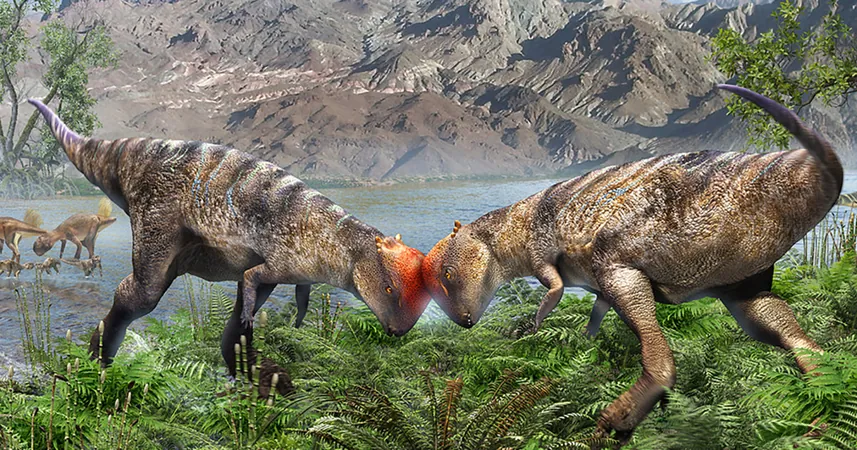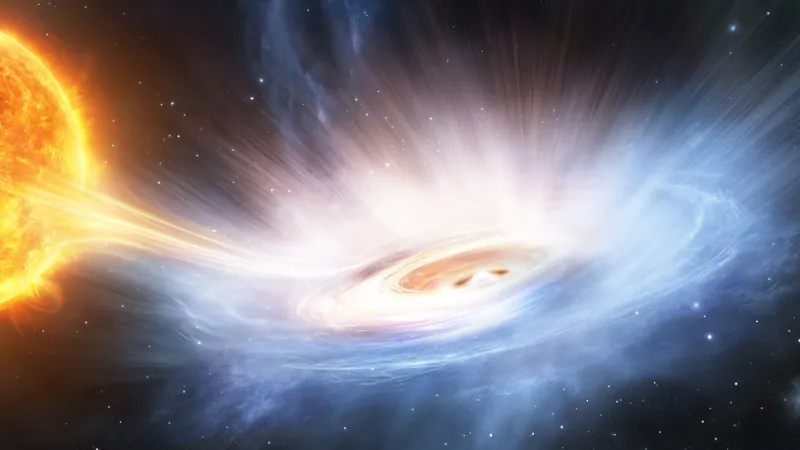
Groundbreaking Discovery: Oldest & Most Complete Dome-Headed Dinosaur Fossil Unearthed in Mongolia!
2025-09-18
Author: Arjun
Unearthing a Ancient Marvel in the Gobi Desert
A team of intrepid scientists has made an astonishing find in the heart of Mongolia—the oldest and most complete fossil of a dome-headed dinosaur, known as a pachycephalosaur! This incredible discovery, detailed in a recent study published in the journal *Nature*, dates back an astonishing 108 to 115 million years.
Meet Zavacephale rinpoche: A New Species Unveiled!
The fossil, showcasing a juvenile from a previously unknown species dubbed Zavacephale rinpoche, was excavated from the Khuren Dukh formation in the Gobi Desert—a breathtaking landscape nestled between China and Russia. Led by the skilled paleontologist Tsogtbaatar Chinzorig from the Mongolian Academy of Sciences, this discovery holds significant implications for our understanding of these enigmatic creatures.
Unlocking Mysteries of the Pachycephalosaurs
Pachycephalosaurs, distinguished by their unique dome-shaped skulls, are among the most mysterious dinosaurs that roamed the Earth during the Cretaceous Period in Asia and North America. Despite their allure, knowledge about these two-legged herbivores has been limited, primarily due to the scant fossil evidence available. As paleobiologist Michael Pittman stated, 'You could fit all of the pachycephalosaur fossils in the world within a bathtub!' This makes the Mongolian find all the more remarkable.
A Peek into the Anatomy of Zavacephale
The fossilized remains of Zavacephale rinpoche reveal an individual that was at least 2 years old and roughly 3 feet long. With more than half of its skeleton recovered, it showcases long legs, notably short arms, and tiny hands. Intriguingly, researchers also discovered gastroliths—stones that the dinosaur likely consumed to assist in grinding down its plant-based diet.
A Head Above the Rest: The Significance of the Skull Dome
Even as a juvenile, Zavacephale exhibited the characteristic thickened bone on its skull, raising questions about the purpose of such a dome. Some scientists speculate that these dinosaurs may have used their domes for head-butting during combat or as a display to attract mates. This specimen becomes a key asset in decoding the evolution of their cranial structure. Chinzorig emphasizes that the completeness of this fossil is monumental for understanding the pachycephalosaur's anatomical development.
Pioneering New Discoveries in Paleontology
What's even more fascinating is that this fossil predates other known pachycephalosaurs by a staggering 15 million years! According to Pittman, 'It’s the oldest pachycephalosaur, so it’s giving us information about earlier species and how they changed over time.' This discovery shows not only that the cranial dome has been a part of their anatomy for much longer than previously thought but also offers insight into their evolutionary journey.
Conclusion: A Dinosaur That Stands the Test of Time
Zavacephale rinpoche, though smaller than its larger relatives that could reach a length of 14 feet, represents a significant stride forward in paleontological research. The implications of this discovery will resonate through the halls of science, helping us unravel the mysteries of the past one fossil at a time!


 Brasil (PT)
Brasil (PT)
 Canada (EN)
Canada (EN)
 Chile (ES)
Chile (ES)
 Česko (CS)
Česko (CS)
 대한민국 (KO)
대한민국 (KO)
 España (ES)
España (ES)
 France (FR)
France (FR)
 Hong Kong (EN)
Hong Kong (EN)
 Italia (IT)
Italia (IT)
 日本 (JA)
日本 (JA)
 Magyarország (HU)
Magyarország (HU)
 Norge (NO)
Norge (NO)
 Polska (PL)
Polska (PL)
 Schweiz (DE)
Schweiz (DE)
 Singapore (EN)
Singapore (EN)
 Sverige (SV)
Sverige (SV)
 Suomi (FI)
Suomi (FI)
 Türkiye (TR)
Türkiye (TR)
 الإمارات العربية المتحدة (AR)
الإمارات العربية المتحدة (AR)